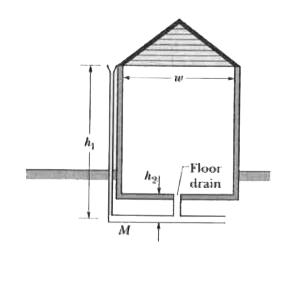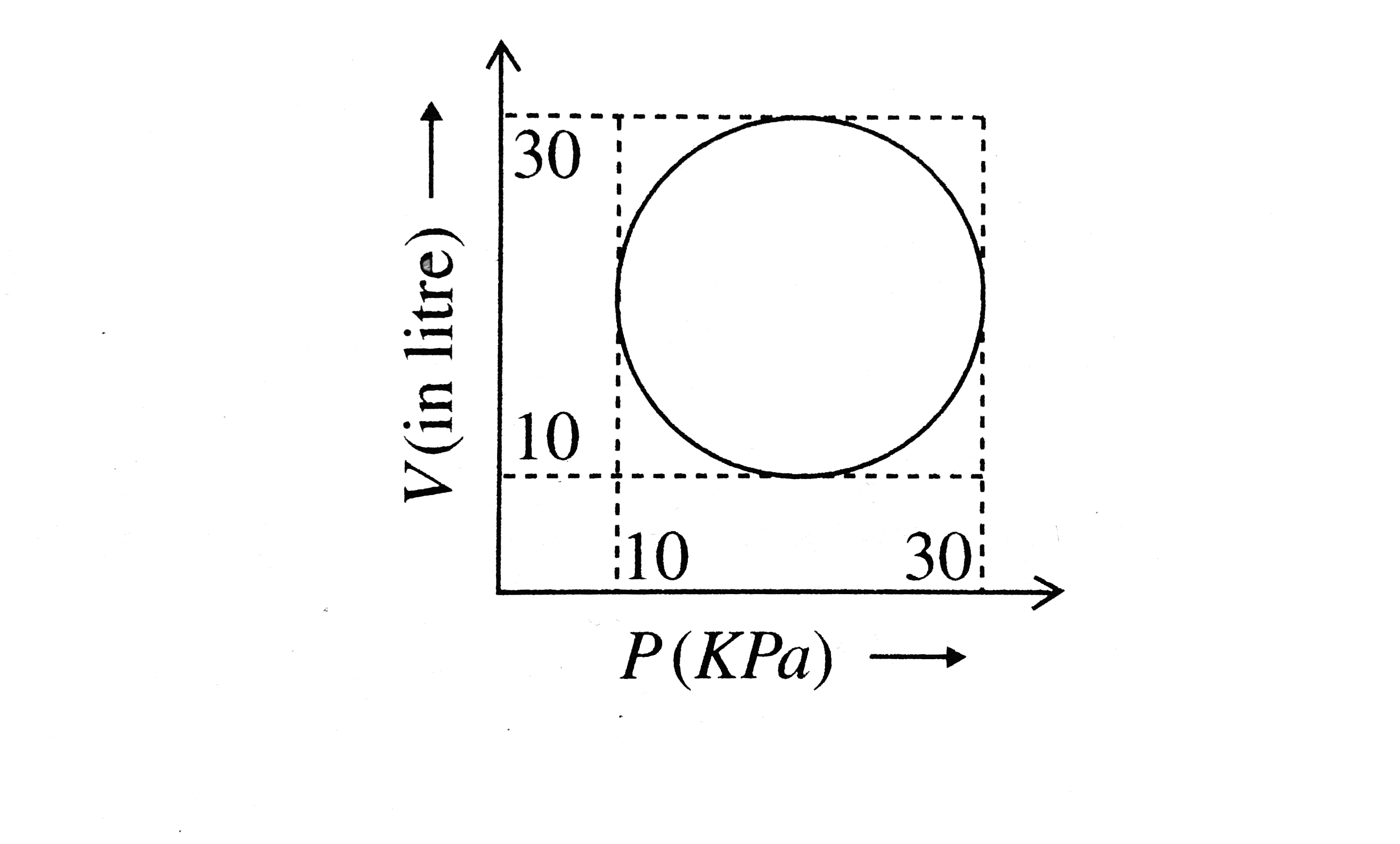A very simplified schematic of the rain drainage system for a home is shown in Fig. Rain falling on the slanted roof runs off into gutters around the roof edge, it then drains through downspouts (only one is shown) into a main drainage pipe M below the basement, which carries the water to an even larger pipe below the street. In Fig. a floor drain in the basement is also connected to drainage pipe M. Suppose the following apply:
(1) the downspouts have height h1 = 11 m,
(2) the floor drain has height h2 = 1.2 m,
(3) pipe M has radius 2.0 cm,
(4) the house has side width w = 40 m and front length L = 70 m,
(5) all the water striking the roof goes through pipe M,
(6) the initial speed of the water in a downspout is negligible, and
(7) the wind speed is negligible (the rain falls vertically).
At what rainfall rate, in centimeters per hour, will water from pipe M reach the height of the floor drain and threaten to flood the basement?

Text Solution
≈2.2 cm/h
|
Updated on:21/07/2023
Topper's Solved these Questions
- BOOK - RESNICK AND HALLIDAYCHAPTER - FLUIDSEXERCISE - PRACTICE QUESTIONS (SINGLE CORRECT CHOICE TYPE)48videos
FLUIDS
- BOOK - RESNICK AND HALLIDAYCHAPTER - FLUIDSEXERCISE - PRACTICE QUESTIONS (More than One Correct Choice Type )10videos
FLUIDS
- BOOK - RESNICK AND HALLIDAYCHAPTER - FLUIDSEXERCISE - CHECKPOINT8videos
FLUIDS
- BOOK - RESNICK AND HALLIDAYCHAPTER - ELECTROMAGNETIC WAVES EXERCISE - PRACTICE QUESTIONS (Integer Type)3videos
ELECTROMAGNETIC WAVES
- BOOK - RESNICK AND HALLIDAYCHAPTER - FORCE AND MOTION - I EXERCISE - PRACTICE QUESTIONS (Integer Type)3videos
FORCE AND MOTION - I
Similar Questions
Knowledge Check
- Question 1 - Select One
Heat energy absorbed by a system in going through a cyclic process shown in Fig.
 A107πJB104πJC102πJD10−3πJ
A107πJB104πJC102πJD10−3πJ - Question 2 - Select One
A pipe of diameter d can drain a certain water tank in 40 minutes. The time taken by a pipe of diameter 2d for doing the same job in :
A5 minutesB10 minutesC20 minutesD80 minutes
Explain the evolution of Peninsular drainage system.
View SolutionDescribe the drainage system of the Harappan cities.
View SolutionWhat are different forms of drainage system?
View SolutionWhat is drainage and drainage basin?Explain it.
View SolutionA liquid is flowing through horizonatal pipes as shown in figure.
 View Solution
View SolutionWhat does ‘drainage' mean? What is a 'drainage basin?
View Solution

